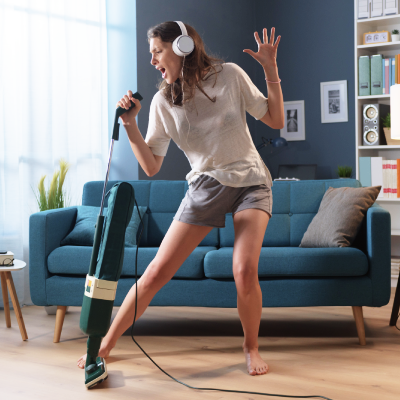
Bagged vs. Bagless Vacuums: The Cleaning Conundrum
Introduction
When it comes to keeping our homes and businesses clean and free of dust and debris, choosing the right vacuum cleaner is crucial. One of the primary decisions you'll face is whether to opt for a bagged or bagless vacuum cleaner. In this comprehensive guide, we'll explore the key differences between bagged and bagless vacuums, helping you make an informed decision for your cleaning needs and ultimately the type of vaccum bags that suit you.

Bagged vs. Bagless Vacuums
The following sections break down the differences between bagged and bagless vacuums, shedding light on what each type offers in terms of filtration, maintenance, cost, performance, environmental impact, and user experience:
Filtration and Allergen Control
When comparing bagged vs. bagless vacuums, bagged vacuums are typically superior in filtration and allergen control. The sealed bags trap dust, dirt, and allergens more effectively, preventing them from escaping back into the air. This makes bagged vacuums ideal for homes with allergy sufferers or pets. Bagless vacuums, on the other hand, rely on filters and cyclonic technology to separate dirt from the air. While many bagless models come with HEPA filters, which are effective at trapping small particles, the process of emptying the dustbin can release dust and allergens back into the environment if not done carefully.
Maintenance and Convenience
Maintenance is a significant consideration when choosing between a bagged or bagless vacuum. Bagged vacuums require you to purchase and replace bags regularly, which can be seen as an inconvenience. However, these bags are easy to dispose of without creating a mess. Bagless vacuums eliminate the need for bags, which can save money and reduce waste. However, their dustbins need to be emptied frequently, and filters must be cleaned or replaced regularly to maintain performance, which can be a messy and time-consuming process.
Cost Over Time
The cost of a vacuum cleaner goes beyond the initial purchase price. Bagged vacuums often have a lower upfront cost, but the ongoing expense of buying replacement bags can add up over time. Bagless vacuums may have a higher initial cost, but they do not require bag replacements, which can result in cost savings over the lifespan of the vacuum. However, the cost of replacing filters should also be considered when calculating the total cost of ownership for a bagless vacuum.
Performance and Efficiency
Performance differences between bagged vs. bagless vacuums can influence your choice. Bagged vacuums generally maintain strong suction power as the bag fills up, whereas bagless models can lose suction if the dustbin is not emptied regularly. The design of bagged vacuums ensures that air flows through the bag, maintaining consistent performance. Bagless vacuums rely on cyclonic action to separate dirt from the air, but performance can diminish if the filters are clogged or the dustbin is full.
Environmental Impact
The environmental impact of a bagged or bagless vacuum is another important factor. Bagless vacuums are often considered more eco-friendly because they do not require disposable bags, reducing waste. However, they still involve the disposal of filters and other components. Bagged vacuums generate waste through used bags, but these bags often contain the dirt and debris in a more controlled manner, reducing the spread of dust when they are disposed of.
User Experience and Handling
User experience varies between bagged and bagless vacuums. Bagged vacuums are typically easier to handle when it comes to disposing of collected dirt, as the sealed bags can be removed and discarded without creating a mess. This makes them a cleaner option for those who prefer minimal contact with dust and debris. Bagless vacuums provide the convenience of seeing how much dirt has been collected, which can be motivating for frequent cleaning. However, emptying the dustbin and maintaining the filters can be a more hands-on and potentially messy task.

Conclusion
Whether you opt for the tried-and-true bagged vacuum or embrace the modern convenience of a bagless model, choosing the right vacuum cleaner is a significant decision for maintaining a clean and healthy home. By weighing the pros and cons of bagged and bagless vacuums and considering your individual needs, you can make a well-informed decision that contributes to a more efficient and enjoyable cleaning experience.
Stay Connected
Stay connected and be the first to know about our latest products, special offers, and exciting news:The Cleaning Blog
Want to learn more about cleaning? From the latest cleaning and hygiene news to handy how-to guides, why not check out our most popular blog categories.Stay Connected
Stay connected and be the first to know about our latest products, special offers, and exciting news:











